Reptiles, with their fascinating evolutionary history and remarkable adaptations, contribute significantly to North America’s biodiversity. The United States, with its diverse ecosystems ranging from arid deserts to lush wetlands, provides habitat for a surprising variety of these cold-blooded creatures. While some regions boast greater reptile diversity than others, several species have successfully established themselves across multiple states, becoming familiar sights to many Americans. Whether you’re hiking through national parks, exploring your local nature preserve, or simply spending time in your backyard, chances are you’ve encountered some of these remarkable animals. This article explores ten of the most widespread reptile species you’re likely to encounter throughout the United States, their distinctive characteristics, behaviors, and the ecosystems they inhabit.
American Alligator (Alligator mississippiensis)
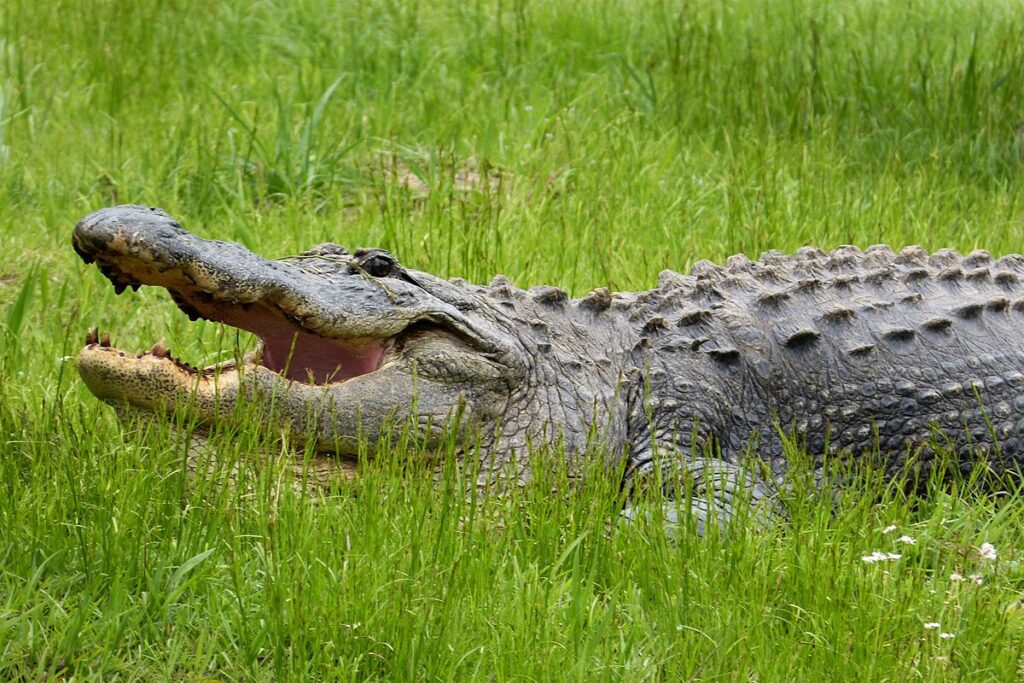
The American alligator represents one of the United States’ most impressive reptilian residents, primarily inhabiting the southeastern states from North Carolina to Texas, with Florida hosting the largest population. These massive reptiles can grow up to 15 feet long and weigh over 1,000 pounds, featuring distinctive broad snouts and powerful jaws capable of exerting tremendous bite force. American alligators are semi-aquatic predators that thrive in freshwater environments including swamps, marshes, rivers, and lakes, where they feed on fish, birds, mammals, and occasionally larger prey. Once endangered due to overhunting and habitat loss, alligators have made a remarkable recovery thanks to conservation efforts, becoming a conservation success story while remaining a symbol of the American South’s wild wetlands.
Common Snapping Turtle (Chelydra serpentina)
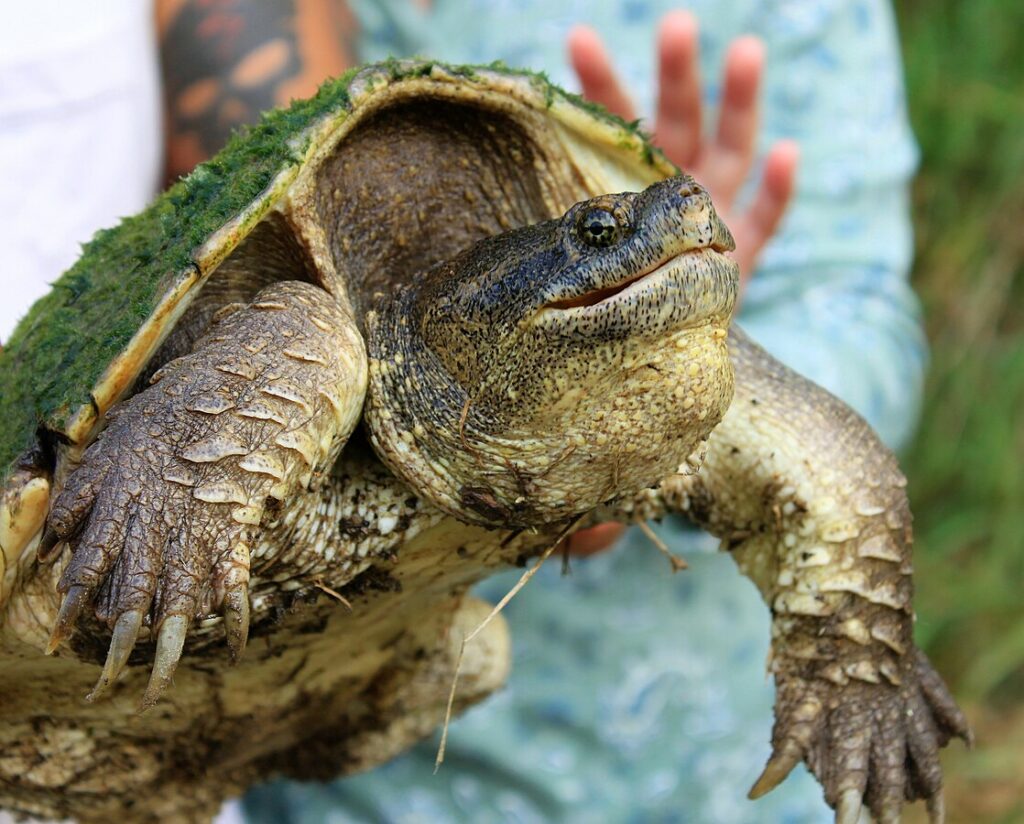
The common snapping turtle has established itself across a vast range of the United States, inhabiting freshwater ecosystems from the eastern seaboard west to the Rocky Mountains and from southern Canada to the Gulf of Mexico. Characterized by their prehistoric appearance, powerful jaws, ridged shells, and long, flexible necks, these formidable reptiles can weigh up to 35 pounds in the wild. Unlike many turtles, snappers rarely bask in the sun, instead spending most of their time submerged in muddy waters of lakes, ponds, and slow-moving streams, where they ambush prey and scavenge for food. Despite their intimidating reputation and defensive nature on land, snapping turtles play valuable ecological roles as aquatic cleaners, removing dead animals from water systems while serving as living fossils that have changed little over millions of years of evolution.
Eastern Box Turtle (Terrapene carolina)
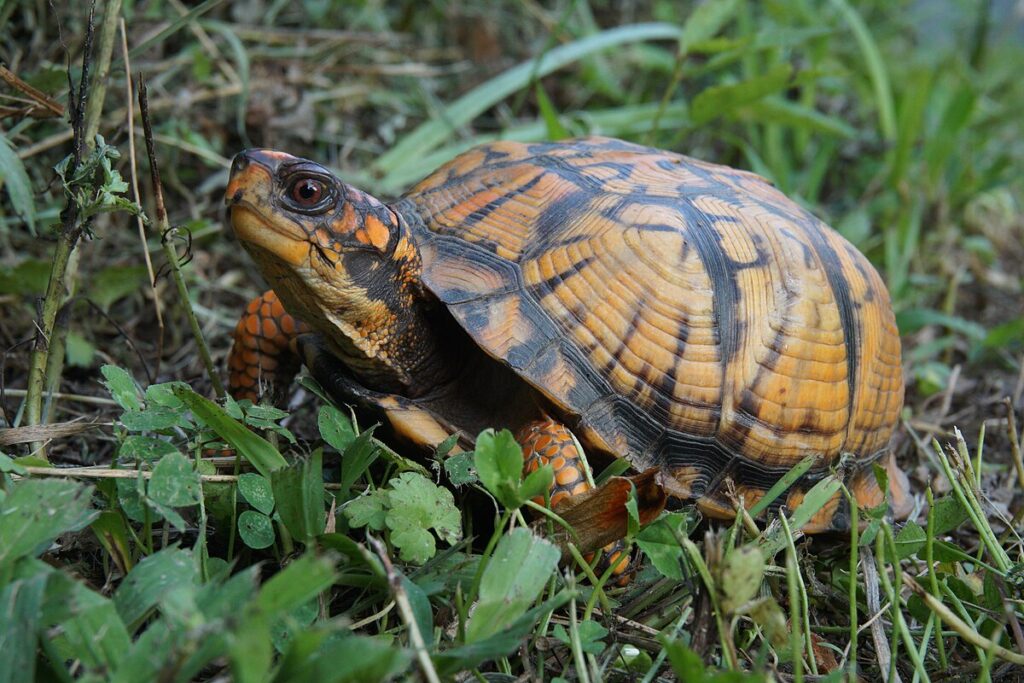
The eastern box turtle represents one of America’s most recognizable and beloved reptiles, distributed primarily throughout the eastern and central United States from Maine to Florida and west to Michigan, Illinois, and Texas. Distinguished by their high-domed shells with intricate yellow or orange patterns on a brown or black background, these terrestrial turtles possess a unique hinged plastron (lower shell) that allows them to completely close their shells for protection against predators. Eastern box turtles inhabit moist woodlands, fields, thickets, and meadows, where they forage for a diverse omnivorous diet including insects, berries, mushrooms, flowers, and occasionally carrion. Despite their widespread distribution, box turtle populations face significant threats from habitat fragmentation, road mortality, and collection for the pet trade, with their naturally long lifespan of 50+ years often drastically shortened in human-altered landscapes.
Garter Snake (Thamnophis spp.)
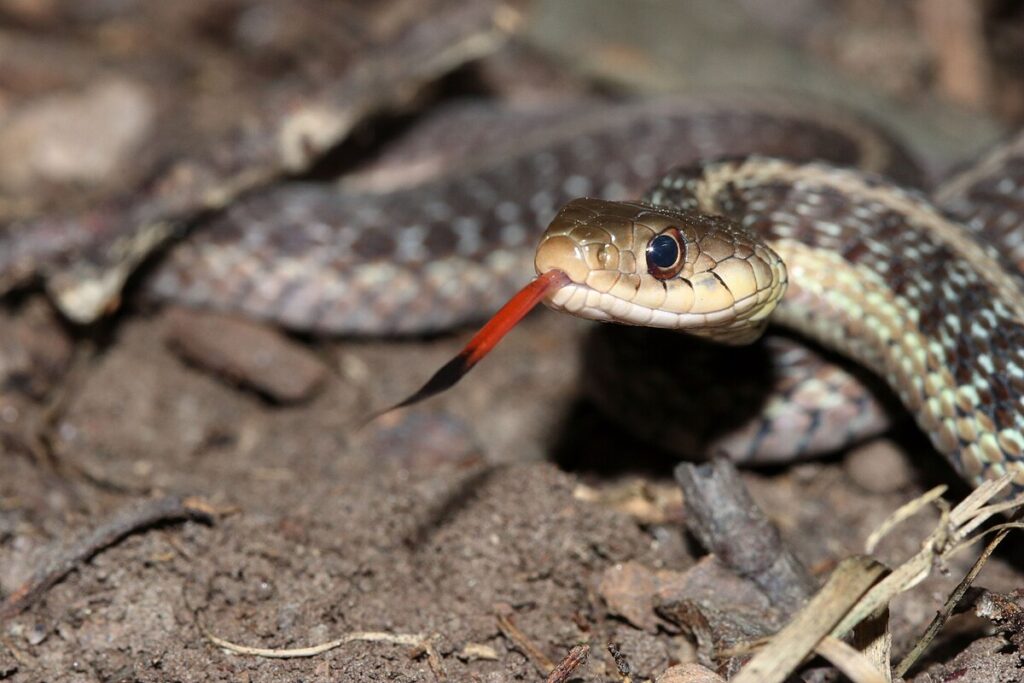
Garter snakes comprise the most widespread reptile genus in North America, with various species occurring in nearly every state and adapting to diverse habitats from forests and grasslands to suburban gardens and urban parks. These relatively small, non-venomous snakes typically display distinctive longitudinal stripes running down their bodies, though coloration varies considerably across species and regions, ranging from olive green to brown or black with yellow, red, or blue stripes. Highly adaptable, garter snakes thrive in moist environments where they hunt amphibians, worms, fish, and small rodents, remaining active even in cooler temperatures that would immobilize many other snake species. Garter snakes represent one of the few reptiles that give birth to live young rather than laying eggs, with females producing litters of 10-40 baby snakes in late summer, making them fascinating subjects for backyard naturalists and professional herpetologists alike.
Western Fence Lizard (Sceloporus occidentalis)
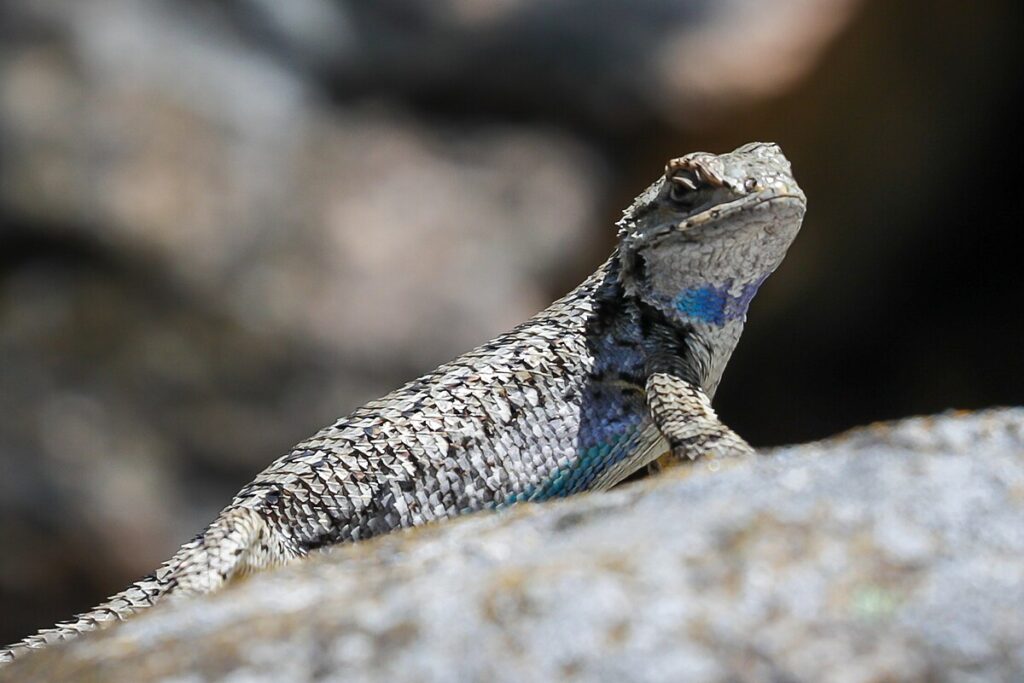
The western fence lizard, commonly known as the “blue belly” due to the males’ vibrant blue undersides, dominates the reptile landscape across much of the western United States from Washington to the Baja Peninsula and east to Nevada and Idaho. These agile lizards typically measure 5-8 inches in length and feature keeled scales creating a spiny appearance, with coloration ranging from gray to brown with intricate patterns that provide excellent camouflage against rocks and tree bark. Fence lizards are frequently spotted performing push-ups on prominent perches like rocks, logs, or fence posts—a behavior that serves both territorial display and thermoregulation purposes. Beyond their ecological role as insect controllers, western fence lizards provide an unexpected public health benefit: their blood contains a protein that kills the bacterium causing Lyme disease when infected ticks feed on these lizards, effectively reducing Lyme disease rates in areas where these reptiles are abundant.
Five-lined Skink (Plestiodon fasciatus)
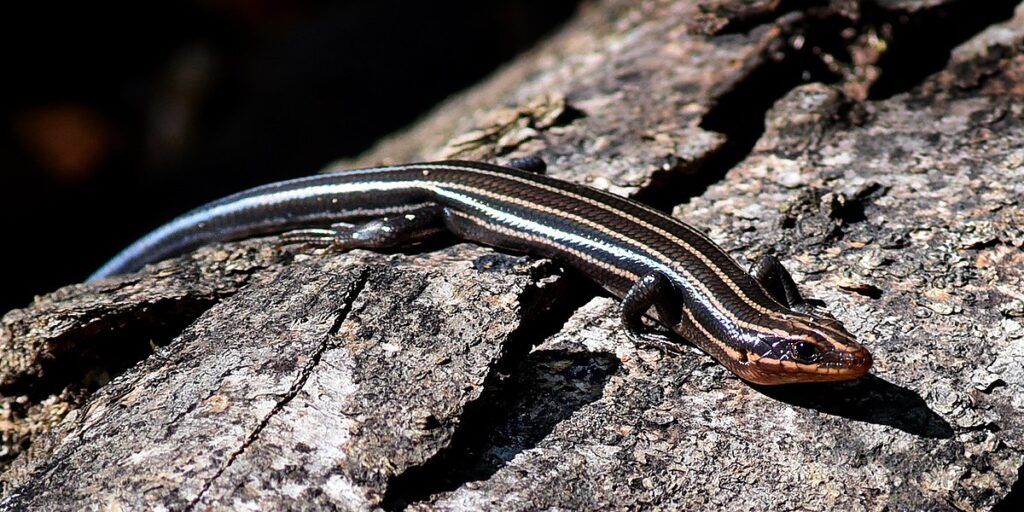
The five-lined skink represents one of the most striking and widely distributed lizards in the eastern United States, ranging from New England to Florida and west to Michigan and portions of Texas. Juvenile specimens display a brilliant blue tail and five distinctive white or yellowish stripes against a black background, creating a striking appearance that gradually fades as they mature into adulthood, when males develop reddish-orange coloration on their heads during breeding season. These agile lizards typically reach 5-8 inches in length and inhabit diverse environments including deciduous forests, rocky outcrops, and suburban areas, where they seek shelter under logs, rocks, and leaf litter while hunting insects, spiders, and other small invertebrates. Five-lined skinks possess the remarkable ability to shed their tails when grabbed by predators—a defensive strategy called autotomy that allows the detached tail to continue wiggling, distracting the predator while the skink escapes, eventually regenerating a replacement tail that, while functional, never quite matches the original.
Eastern Ratsnake (Pantherophis alleghaniensis)

The eastern ratsnake, formerly known as the black rat snake, ranks among the largest and most commonly encountered non-venomous snakes across the eastern and central United States, ranging from New England to Florida and west to the Mississippi River. These impressive constrictors can reach lengths of six feet or more, displaying primarily black coloration as adults with faint traces of patterning, while juveniles exhibit a more distinct pattern of black blotches on a gray background. Highly adaptable, ratsnakes occupy diverse habitats from forests and farmlands to suburban neighborhoods, demonstrating exceptional climbing abilities that allow them to scale trees, buildings, and other vertical surfaces in pursuit of prey or suitable shelter. Though often misidentified and needlessly feared, eastern ratsnakes provide valuable ecological services by controlling rodent populations, with a single snake potentially consuming dozens of disease-carrying mice and rats annually, making them beneficial neighbors despite their occasionally startling presence in barns, attics, or garden sheds.
Painted Turtle (Chrysemys picta)
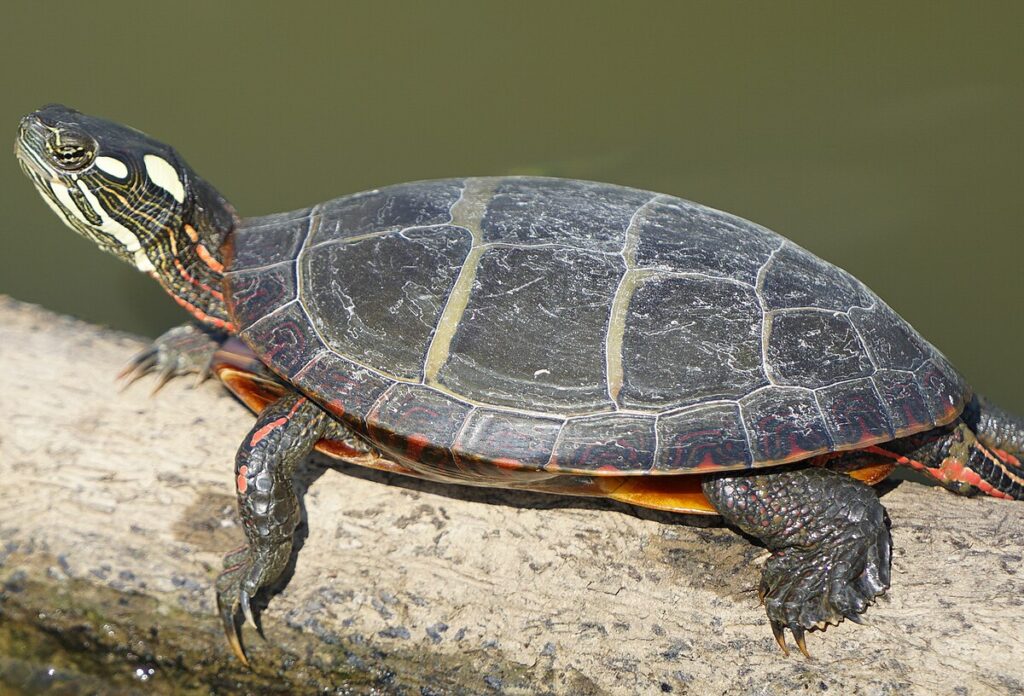
The painted turtle stands as North America’s most widespread native turtle, with four subspecies collectively spanning from the Atlantic to the Pacific and from southern Canada to the Gulf of Mexico. Immediately recognizable by their smooth olive to black shells adorned with distinctive red markings along the edges and bright yellow stripes on their heads, necks, and limbs, painted turtles rarely exceed 10 inches in length. These aquatic reptiles inhabit slow-moving fresh waters with soft bottoms, abundant aquatic vegetation, and readily available basking sites, where groups can often be observed sunning themselves on logs or rocks, sometimes stacked several turtles high. Painted turtles demonstrate remarkable cold-tolerance, enabling them to survive in northern states where many reptiles cannot, enduring winter by entering a state of brumation at the bottom of ponds where they can absorb minimal oxygen through specialized tissues rather than through lung breathing. Despite their ability to bite if handled, painted turtles are generally docile creatures that quickly retreat into their shells or slip into water when approached, making them perfect subjects for wildlife observation rather than handling.
Green Anole (Anolis carolinensis)
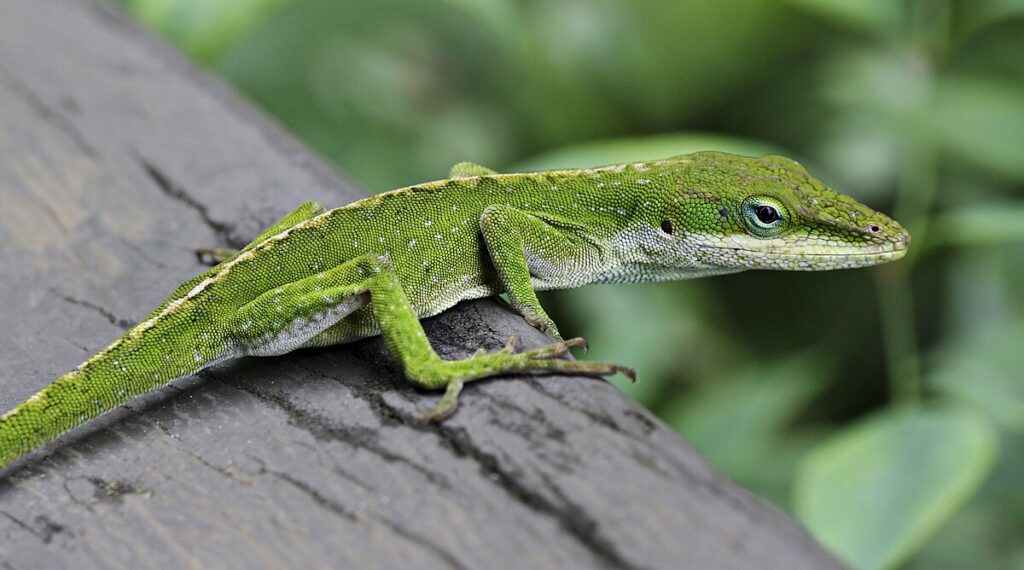
The green anole, sometimes mistakenly called the “American chameleon,” represents the only anole lizard native to the United States, primarily inhabiting the southeastern states from Virginia to Florida and west to Texas and Oklahoma. While their common name suggests a uniform green coloration, these slender lizards can actually change color from bright emerald green to various shades of brown depending on temperature, mood, and background—though unlike true chameleons, their color-changing abilities are relatively limited. Male green anoles are territorial and frequently display their bright red dewlaps (throat fans) to attract mates or warn rivals, creating flashes of color that often catch human observers’ attention in garden settings. These small insectivores, typically measuring 5-8 inches including their long tails, thrive in trees, shrubs, and vines where they hunt insects while remaining alert for predators such as birds, larger lizards, and snakes. Despite competition from introduced brown anoles and habitat loss, green anoles remain common backyard residents throughout much of the Southeast, particularly in gardens with diverse vegetation and minimal pesticide use.
Western Diamondback Rattlesnake (Crotalus atrox)
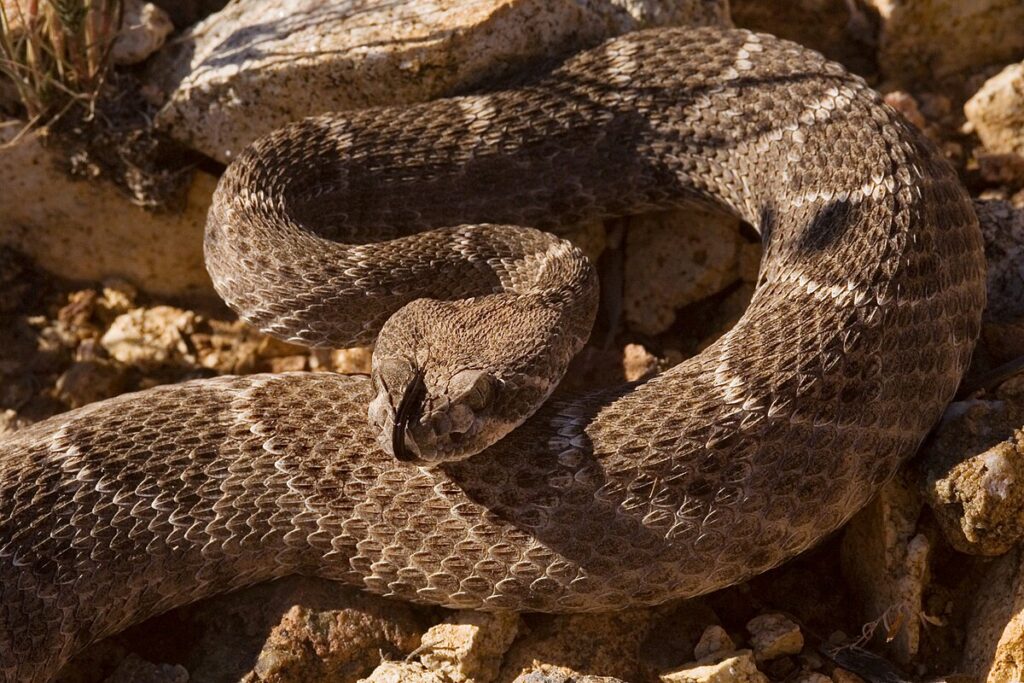
The western diamondback rattlesnake commands respect as one of America’s most iconic and widely recognized venomous reptiles, inhabiting arid and semi-arid regions across the southwestern United States from central California to central Arkansas and south into Mexico. These impressive pit vipers typically grow to 3-5 feet in length, featuring distinctive diamond-shaped patterns along their backs, black and white banded tails, and the characteristic rattle that serves as a warning to potential threats. Western diamondbacks possess specialized heat-sensing pits between their eyes and nostrils that allow them to detect warm-blooded prey even in complete darkness, making them effective predators of rodents, rabbits, and birds. Despite their fearsome reputation, rattlesnakes generally avoid human confrontation, using their rattle as a warning system and striking only when threatened or cornered, with envenomation occurring in defensive situations rather than as a predatory strategy. Conservation of these ecologically important predators remains complicated by persistent negative public perception, even as habitat loss, road mortality, and deliberate killing at “rattlesnake roundups” threaten their populations in some regions.
Red-eared Slider (Trachemys scripta elegans)
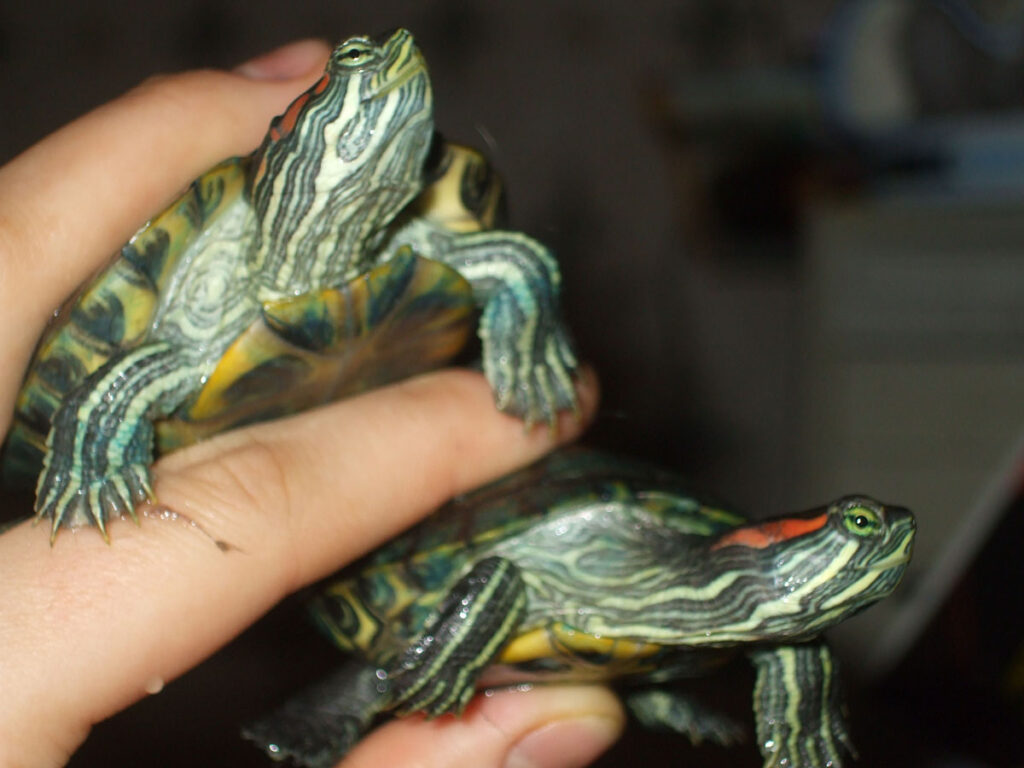
The red-eared slider has achieved unprecedented distribution across the United States, occurring naturally in the Mississippi River drainage but now established in nearly every state due to released pets and deliberate introductions. Immediately identifiable by their olive to brown shells and the distinctive red stripe behind each eye, these aquatic turtles commonly reach 6-12 inches in length with females typically growing larger than males. Red-eared sliders demonstrate remarkable adaptability, thriving in a wide range of freshwater habitats from rivers and ponds to urban park lakes and retention basins, where they bask in large numbers on available logs, rocks, or shorelines. Once the most commonly sold turtle in the pet trade, countless sliders were purchased as cute quarter-sized hatchlings only to be released when owners became unprepared for their 30+ year lifespan, substantial adult size, and specialized care requirements. While beloved by many wildlife watchers for their conspicuous basking habits, introduced slider populations now compete with native turtles for resources in many regions, demonstrating the complex consequences of the exotic pet trade on native ecosystems and highlighting the importance of responsible pet ownership.
American Crocodile (Crocodylus acutus)
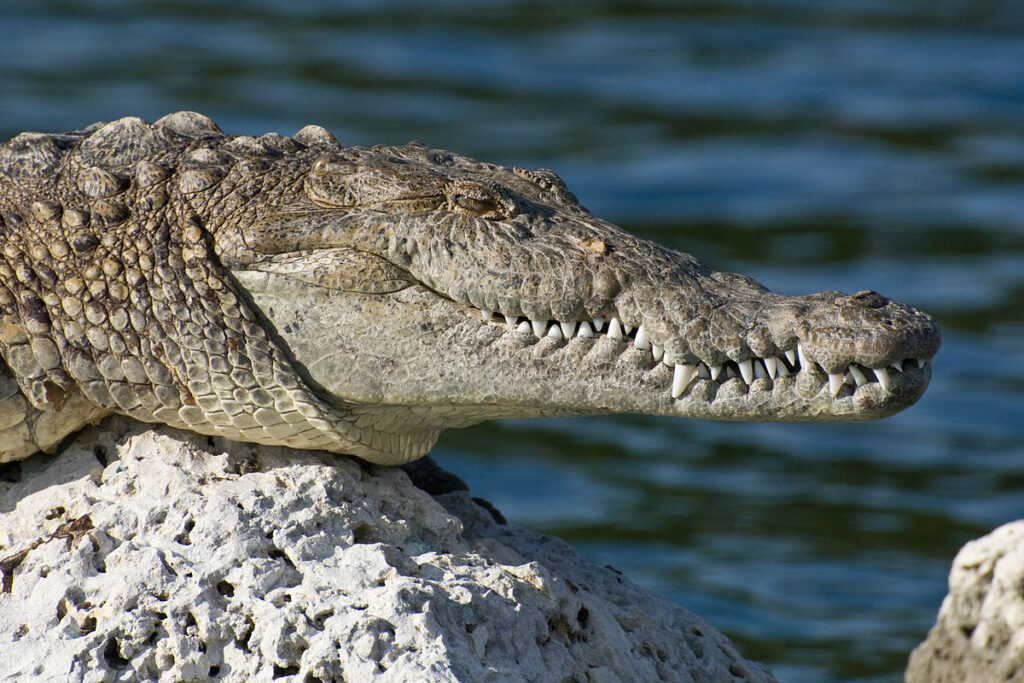
The American crocodile represents one of the United States’ rarest reptiles, with a limited distribution primarily restricted to southern Florida, particularly in coastal areas of Miami-Dade, Monroe, and Collier counties, including Everglades National Park and the Florida Keys. Unlike the more inland-dwelling American alligator, these impressive reptiles prefer brackish and saltwater habitats such as coastal estuaries, saltwater bays, mangrove swamps, and occasionally the mouths of rivers, tolerating saltwater environments that alligators cannot. American crocodiles can be distinguished from alligators by their more grayish coloration, narrower snouts, and the visible fourth tooth in their lower jaw when their mouths are closed. Though capable of reaching lengths up to 15 feet, American crocodiles in the United States rarely exceed 13 feet and generally demonstrate more reclusive behavior than their more aggressive relatives in Central and South America. Once endangered with fewer than 300 individuals in the United States during the 1970s, conservation efforts have helped the population recover to approximately 2,000 non-hatchling individuals, allowing their status to be upgraded to threatened—a conservation success story for one of America’s most misunderstood predators.
America’s reptile diversity represents an important but often overlooked component of our national biodiversity. From the massive alligators of southern swamps to the diminutive lizards darting through western deserts, these remarkable animals have adapted to virtually every habitat the country offers. While some species like rattlesnakes may inspire caution, and others like painted turtles elicit delight, each plays a vital ecological role in their respective ecosystems. By learning to recognize and appreciate these common reptiles, Americans can develop a greater connection to the natural world around them. As development continues to transform landscapes nationwide, understanding and conserving these fascinating creatures becomes increasingly important, ensuring future generations will also have the opportunity to encounter these living representatives of ancient evolutionary lineages in their natural habitats.


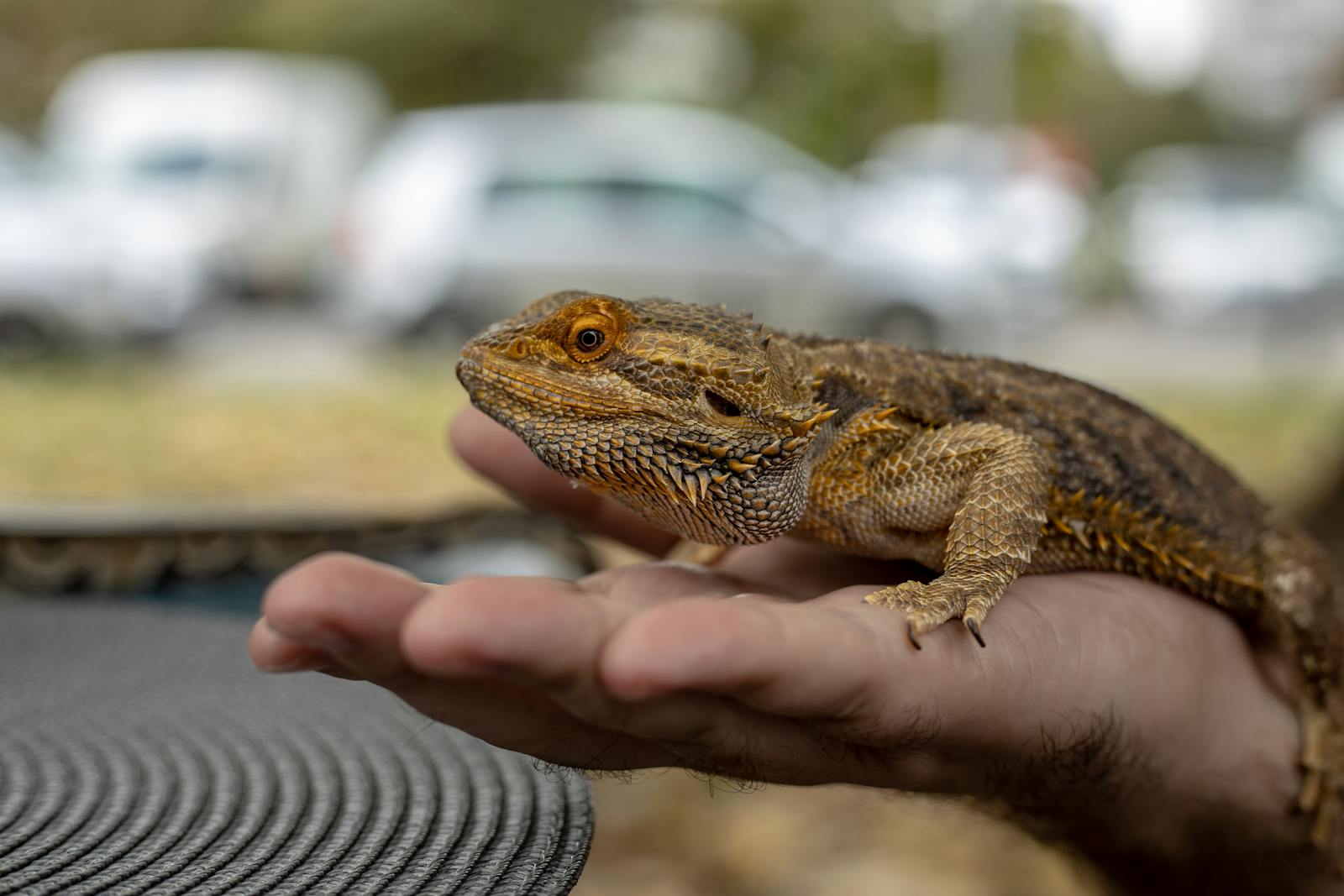

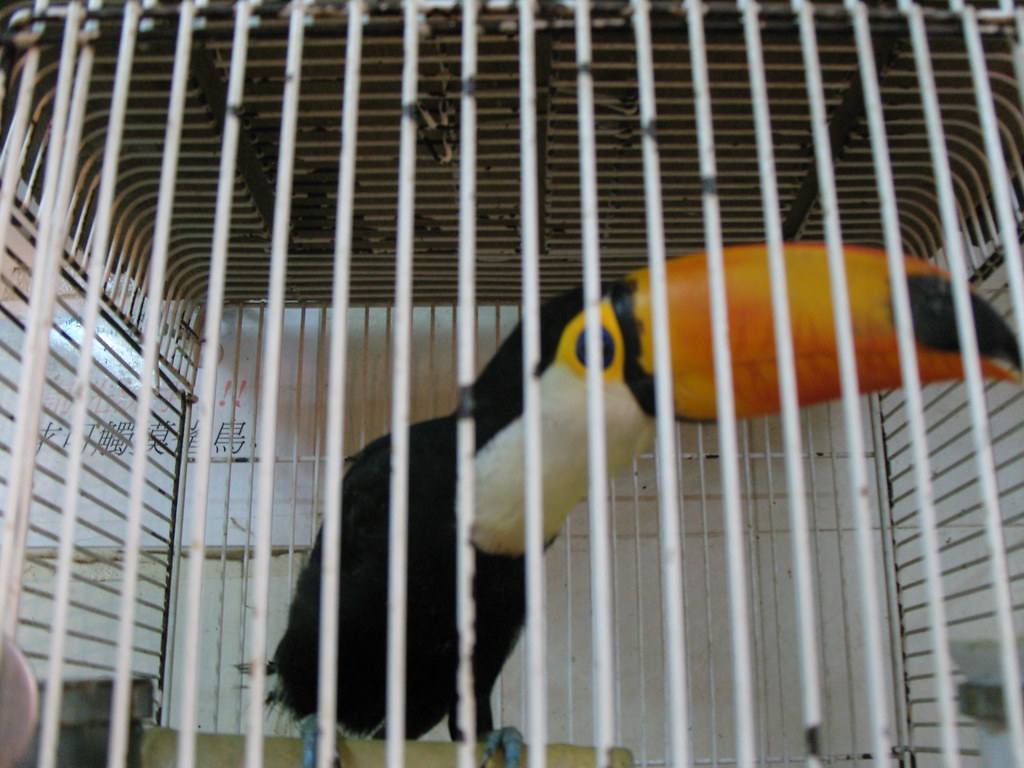
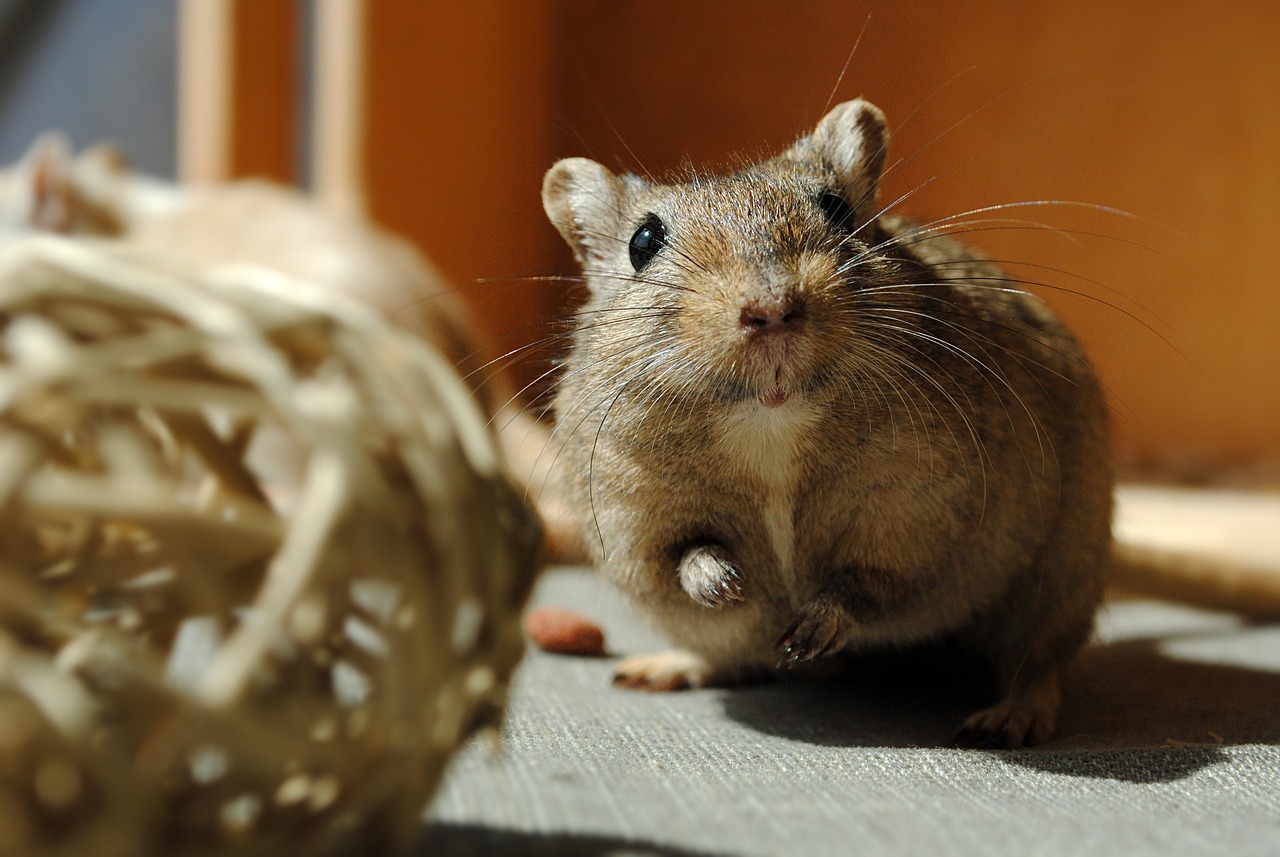
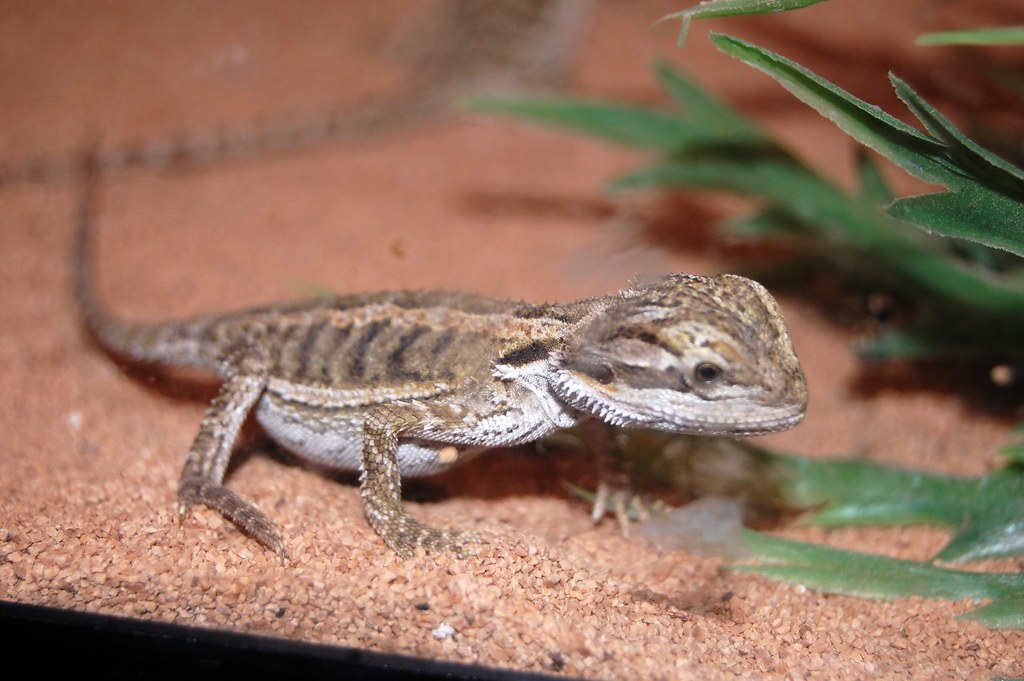
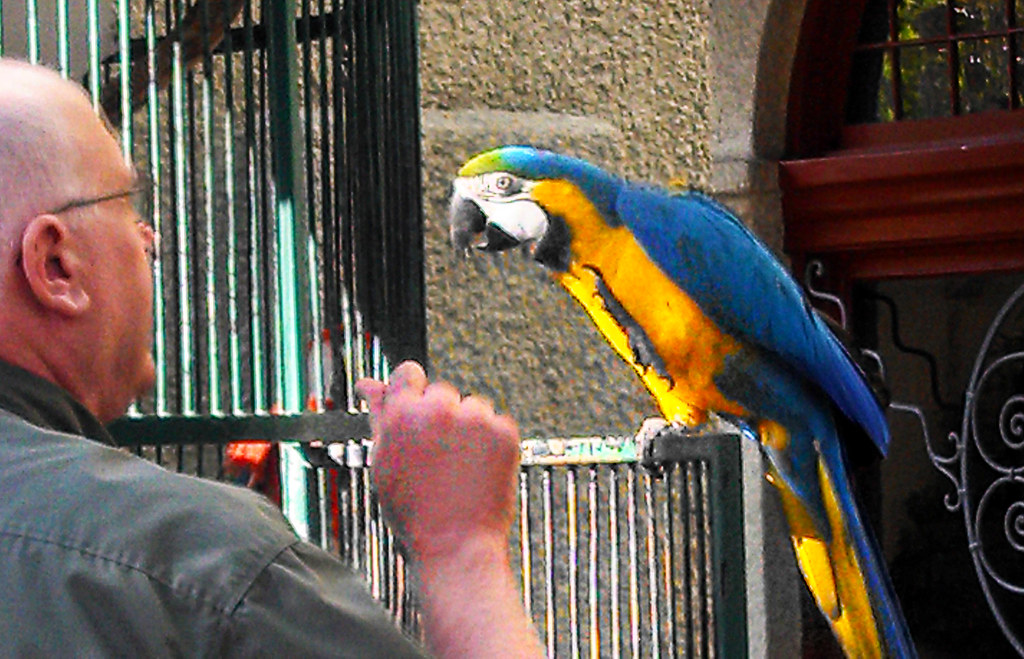
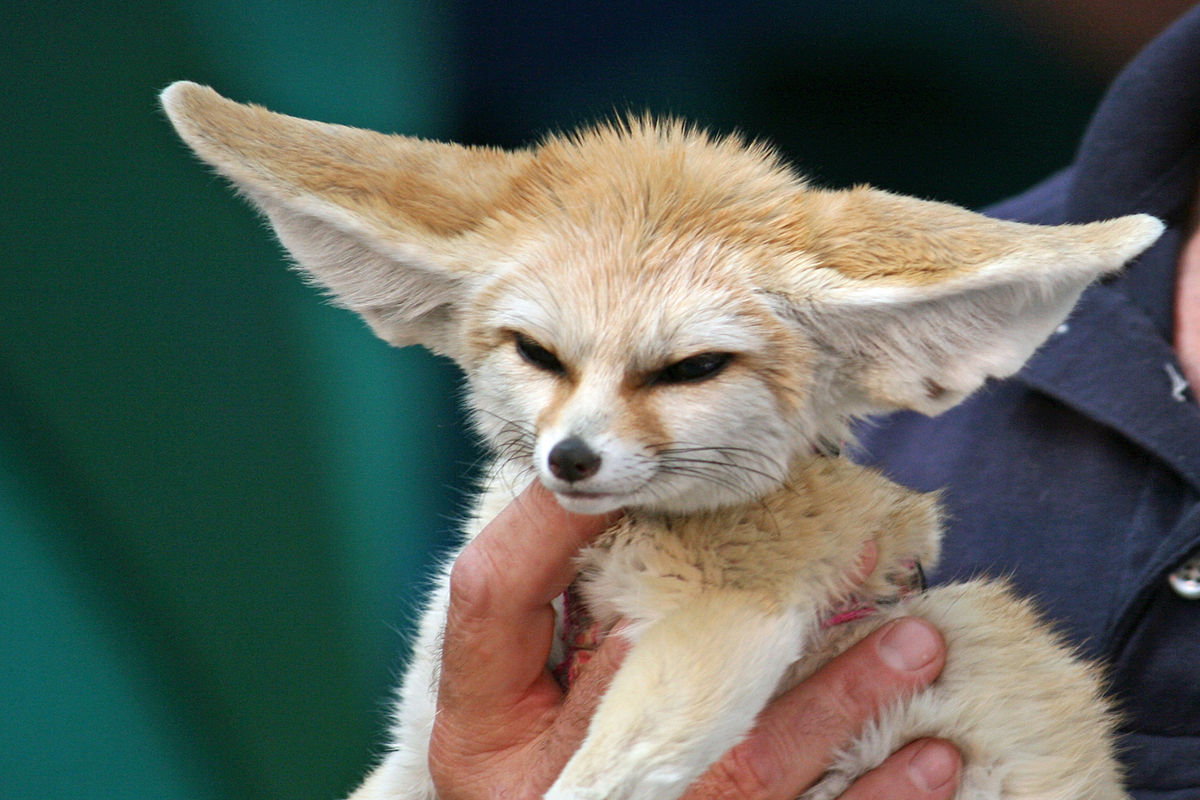
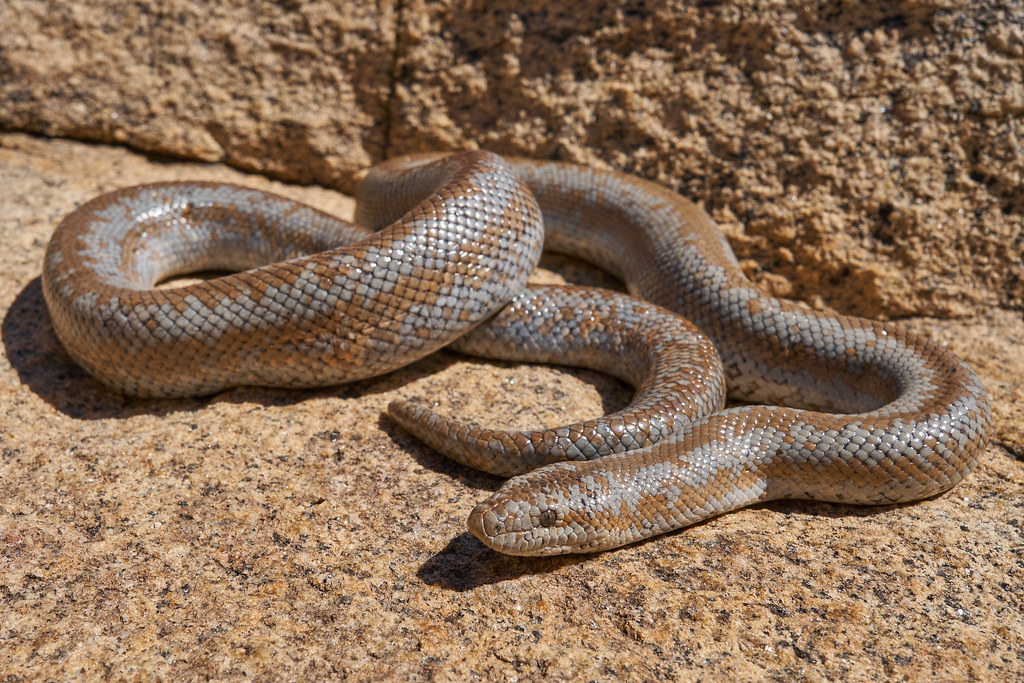
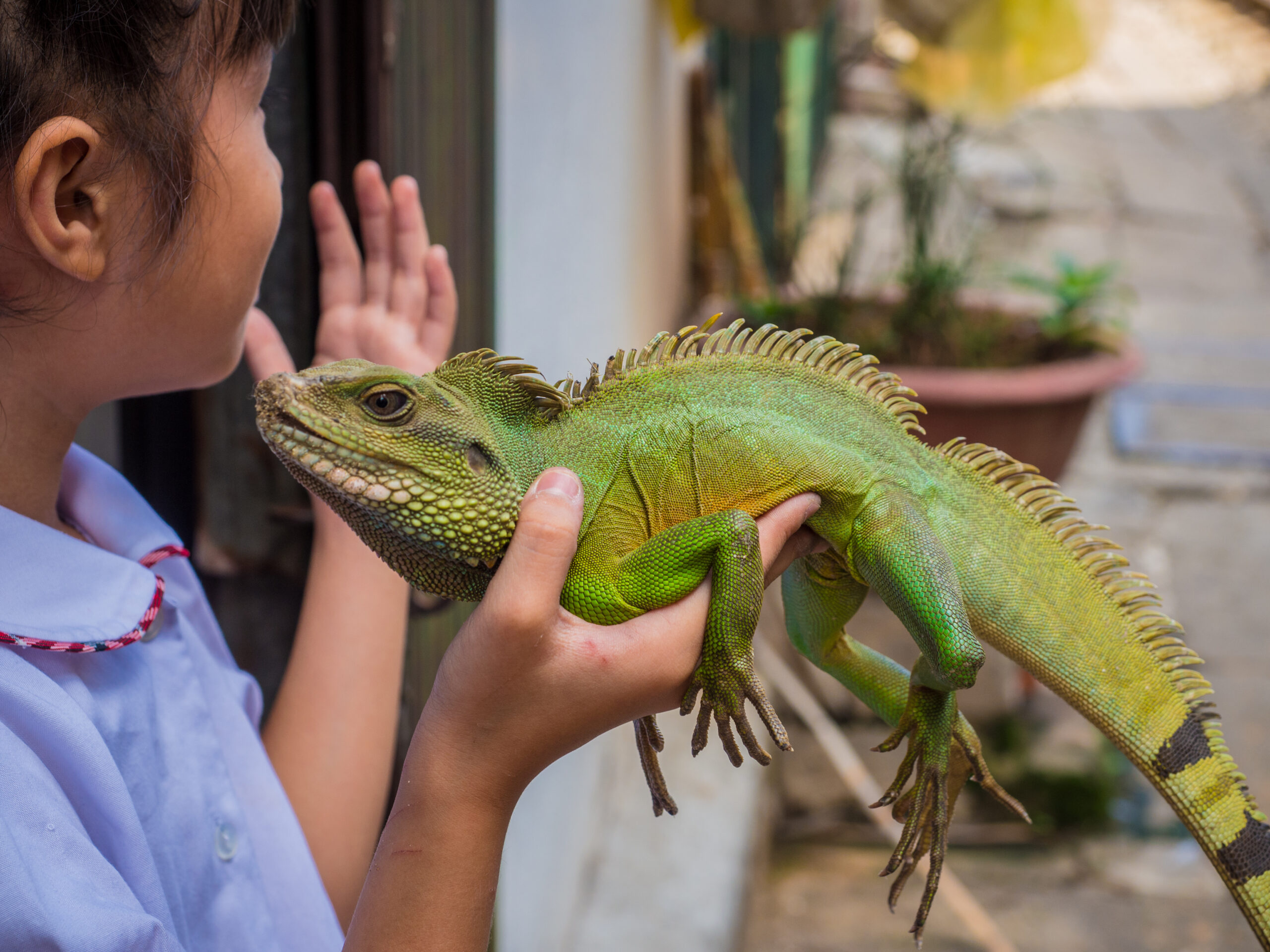





Leave a Reply